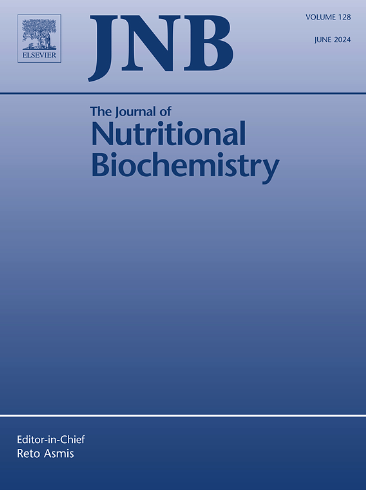Dietary flavonoid actions on senescence, aging, and applications for health
IF 4.8
2区 医学
Q1 BIOCHEMISTRY & MOLECULAR BIOLOGY
引用次数: 0
Abstract
Fruits and vegetables contain biologically active phenolic compounds that show mitigating effects against free radical damage and inflammation. The unique properties of phenolic compounds are protection against oxidative stress, and inception and potentiating of inflammation in the body. Aging is manifest with changes in epigenetic modifications and as with living systems undergo entropy. The gradual decline of body functions and in many cases with aging the cellular processes of senescence are contributors to age-related diseases. Herein the focus is on phenolic compounds as a diet approach to delay the negative consequences of aging. The actions of phenolic compounds on the biology of aging and senescence are presented. The phenolic compounds called flavonoids which are found in many fruits are potential antisenescence factors that benefit health by reducing damage to DNA and the senescence-associated phenotypic cell changes in healthy cells during aging. Flavonoids are proposed to delay and palliate aging where senescence is involved. The dietary sources of natural phenolic compounds afford protection in the aging process and include as some examples naringenin, hesperidin, quercetin, kaempferol, luteolin, genistein, epigallocatechin gallate, and resveratrol. Many of these compounds possess antisenescence effects. The purpose of the review is to discuss where food flavonoids interact with the targets of senescence and how these compounds can attenuate aging-related events. The goal is to provide greater insight into dietary flavonoids and how they improve health and lower the consequences of aging. A novel aspect of this review is the application of flavonoids to neuroprotective effects in brain to reduce pain and improve health with aging.
求助全文
约1分钟内获得全文
求助全文
来源期刊

Journal of Nutritional Biochemistry
医学-生化与分子生物学
CiteScore
9.50
自引率
3.60%
发文量
237
审稿时长
68 days
期刊介绍:
Devoted to advancements in nutritional sciences, The Journal of Nutritional Biochemistry presents experimental nutrition research as it relates to: biochemistry, molecular biology, toxicology, or physiology.
Rigorous reviews by an international editorial board of distinguished scientists ensure publication of the most current and key research being conducted in nutrition at the cellular, animal and human level. In addition to its monthly features of critical reviews and research articles, The Journal of Nutritional Biochemistry also periodically publishes emerging issues, experimental methods, and other types of articles.
 求助内容:
求助内容: 应助结果提醒方式:
应助结果提醒方式:


